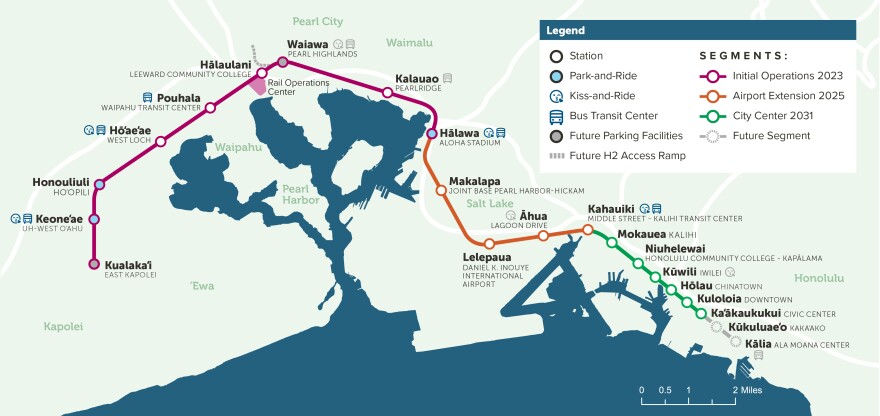The City and County of Honolulu just announced it will begin initial rail service at the end of June, plus free rides for the opening Fourth of July holiday weekend. The city is calling the mass transit system "Skyline."
"This system has really been in the works for 55 years since 1968. And finally, after three major attempts, we're ready to open rail for the citizens of Honolulu," said Roger Morton, the director of the Honolulu Department of Transportation Services.
Morton also sits on the Honolulu Authority for Rapid Transportation board and for decades served as head of Oʻahu Transit Services — which operates TheBus. He has institutional memory dating back to when the very first rail project was proposed.
"In the first iteration, rail was expected to be about a $900 million system. It was going to go from Pearl City to Market City and the federal government was going to put up 80% of the funding. Then I think by the second time we tried it, it was about a $3.5 billion system and the federal government was only going to put up 50%," Morton said. "Now here we are at $10 billion-plus and the federal government share is about 15%."
While people have criticized the Honolulu rail project, Morton stresses the transit system is not just built for today but for generations to come.
"It took us 20, 25 years to build H-1. It took us 20 years or so or more to build H-3. So these big mega projects, these linear projects, they take a long time, but they make a permanent impact on a city," he said.
With 22,000 permitted dwelling units on the way in Central and West Oʻahu, development is not going to stop, Morton said. That means more stress on Oʻahu's transportation infrastructure.
"Fast forward to 2030, 2031 when we finally get into downtown and Civic Center and hopefully to Ala Moana Center, that's when I think that the real benefits of the system are really going to show," Morton told HPR.

The first segment from Kapolei through nine stations to Aloha Stadium opens at 2 p.m. on June 30 after a grand opening ceremony at 10 a.m. The trains are slated to run every 10 minutes on weekdays between 5 a.m. and 7 p.m. and on weekends between 8 a.m. and 7 p.m.
Starting July 1, the first full day of service, passengers must tap a HOLO card to ride for free. After the free-fare promotion, a ride will cost the same as TheBus, which is currently $3 for a single adult with a daily cap of $7.50.
This interview aired on The Conversation on May 15, 2023. The Conversation airs weekdays at 11 a.m. on HPR-1.






